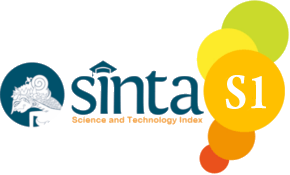PAUCITY AND MULTIPLICITY IN THE GLORIOUS QURAN: A MORPHOPRAGMATIC ANALYSIS
Abstract
In this study, a morpho-pragmatic analysis of broken plural in the Glorious Quran is tackled to answer the question whether the types of broken plural can be replaced without affecting the meaning, and to achieve the aim that these various forms are utilized thoughtfully and creatively and are never used randomly. Accordingly, it is hypothesized in the present study that the broken plural multi forms in the Glorious Quran are selected sensibly and they function in a way that leads the reader to a scene of wider conceptual view and consideration. The value of this study lies in the endeavor to widen the horizon of the reader that the variety of broken plural forms in the Glorious Quran are much more meaningful than they look. This paves the way to consider many items in the Holly Quran as significant, worthwhile, and telling. To prove the hypothesis and achieve the aim, this paper adopts Dressler and Merlini-Barbaresi’s (1994) model in analyzing the chosen excerpts where language choices can be conceived at the level of pragmatics in relation to morphology. Eight Quranic texts are selected, analyzed, discussed, and conclusions are finally derived to assert that the various forms of broken plural in the Glorious Quran are manipulated exquisitely in an effective way.
Keywords
Full Text:
PDFReferences
The Holy Quran.
Aitchison, Jean. "An introduction to cognitive linguistics: Friedrich Ungerer and Hans-Jörg Schmid, London: Longman, 1996, xiv+ 306 pp." (1999): 139-142.
Al-Hilali, Muhammad Taqi-ud-Din, and Muhammad Muhsin Khan. Translation of the Meanings of The Noble Quran in the English Language. King Fahad Complex for the Printing of the Holy Quran, Madinah, K.S.A.
Dressler, Wolfgang U., and Lavinia M. Barbaresi. "Morphopragmatics." In Morphopragmatics. De Gruyter Mouton, 1994.
Hamawand, Zeki. Morphology in English: Word formation in cognitive grammar. Bloomsbury Publishing, 2011.
Hazem, Ali Hussein, and Waleed Younus Meteab. "Nominal Constructions in Modern Standard Arabic With Reference to English." International Journal of Applied Linguistics and English Literature 8, no. 2 (2019): 97-101.
Hazem, Ali Hussein, and Muhammad Hamzah Kanaan. "Domain Adverbs in Legal English Texts: Problems and Strategies." IUP Journal of English Studies 15, no. 4 (2020): 130-141.
Khan, Nouman Ali. Plurals in the Quran, 1999.https://muslimmatters.org/2008 /10/27/plurals-in-the-quran/.
Levinson, Stephen C., Stephen C. Levinson, and S. Levinson. Pragmatics. Cambridge university press, 1983.
Matthews, Peter H. Morphology. Cambridge university press, 1991.
O'Keeffe, Anne, Brian Clancy, and Svenja Adolphs. Introducing pragmatics in use. Routledge, 2011.
Soudi, Abdelhadi, Günter Neumann, and Antal van den Bosch. "Arabic computational morphology: knowledge-based and empirical methods." In Arabic computational morphology, pp. 3-14. Springer, Dordrecht, 2007.
Thomas, Jenny. “Meaning in interaction”. An introduction to pragmatics (1995).
Verschueren, Jef. Understanding Pragmatics. London: Arnold, 1999.
Wickens, George Michael. Arabic grammar: A first workbook. Cambridge University Press, 1980.
Yule, George. “The study of language 4th edition”. Cambridge: Cambri Carlisle, JF (2010). Effects of Instruction in Morphological Awareness on Literacy Achievement: An Integrative Review. Reading Research Quarterly 45, no. 4 (2010): 464-487.
http//understand-arabic.com.
DOI: http://dx.doi.org/10.22373/jiif.v22i2.15244
Refbacks
- There are currently no refbacks.
Welcome to Jurnal Ilmiah Islam Futura (JIIF) open journal system. Thank you very much for visiting. We are looking forward to getting your research articles
Jurnal Ilmiah Islam Futura
All works are licensed under CC-BY
©Published by Center for Research and Community Service (LP2M) in cooperation with the Postgraduate Program of UIN Ar-Raniry Banda Aceh, Aceh, Indonesia.





